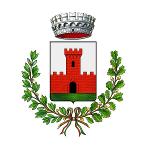Poculum con bugne - Poculum with clew
Ultimo aggiornamento: 30 maggio 2024, 13:21
Tipico contenitore di uso comune utilizzato in ambito domestico.
Si tratta di un vaso di modeste dimensioni e a larga imboccatura con un corpo cilindrico, oppure ovoidale come in questo caso, munito di piccole prese sotto l’orlo.
In questo esemplare le quattro prese sono dette a “tubercolo”.
Come gli altri oggetti ceramici, anche questo è realizzato con la tecnica detta “a colombino” oppure a “cercine” che consiste nel formare lunghi salsicciotti di argilla e arrotolarli su sé stessi fino a formare il vaso.
Spesso in sostituzione dei cordoni si modellavano delle fasce di argilla che, allo stesso modo dei cordoni, venivano arrotolate su sé stesse per dare la prima forma del vaso.
Una volta conclusa la forma, l’esterno viene levigato fin quando i punti di raccordo dei cordoni, o delle fasce, scompaiono completamente lasciando l’intera superfice liscia ed omogenea.
Questo poculum è stato ritrovato nella tomba 21 che presenta un cospicuo corredo ornamentale femminile tra cui molte fibule in bronzo, un torques (un tipo di collana rigida), collane, delle armille e alcuni pendagli anche di ambra. Numerosi i vasi sia di ceramica che di bronzo, e alcuni strumenti usati probabilmente per banchetti.
Datazione: VI sec. a.C, 600-550 a.C.
ENGLISH
Typical container of common use used at home.
It is a vase of modest size and wide mouth with a cylindrical body, or oval-shaped as in this case, equipped with small grips under the edge.
In this specimen the four grips are called "tubercle".
Like the other ceramic artefacts, this one is also made with technique called "colombino" which consists in rolling up long strings of clay, widening it or tightening it to give a shape to the jar. Often, in place of the cords, bands of clay were modeled which, in the same way as the cords, were rolled on themselves to give the first shape of the vase.
Once the shape is finished, the outside is smoothed until the connecting points of the cords, or bands, disappear completely leaving the entire surface smooth and uniform.
This poculum has been found in tomb nr 21 that has a conspicuous ornamental female kit including many bronze fibulas, a torques (a type of rigid necklace), necklaces, armillae and even some amber pendants. There are numerous ceramic and bronze vases, and some tools probably used for banquets.
Dating: sixth century BC (600-500 B.C.)
